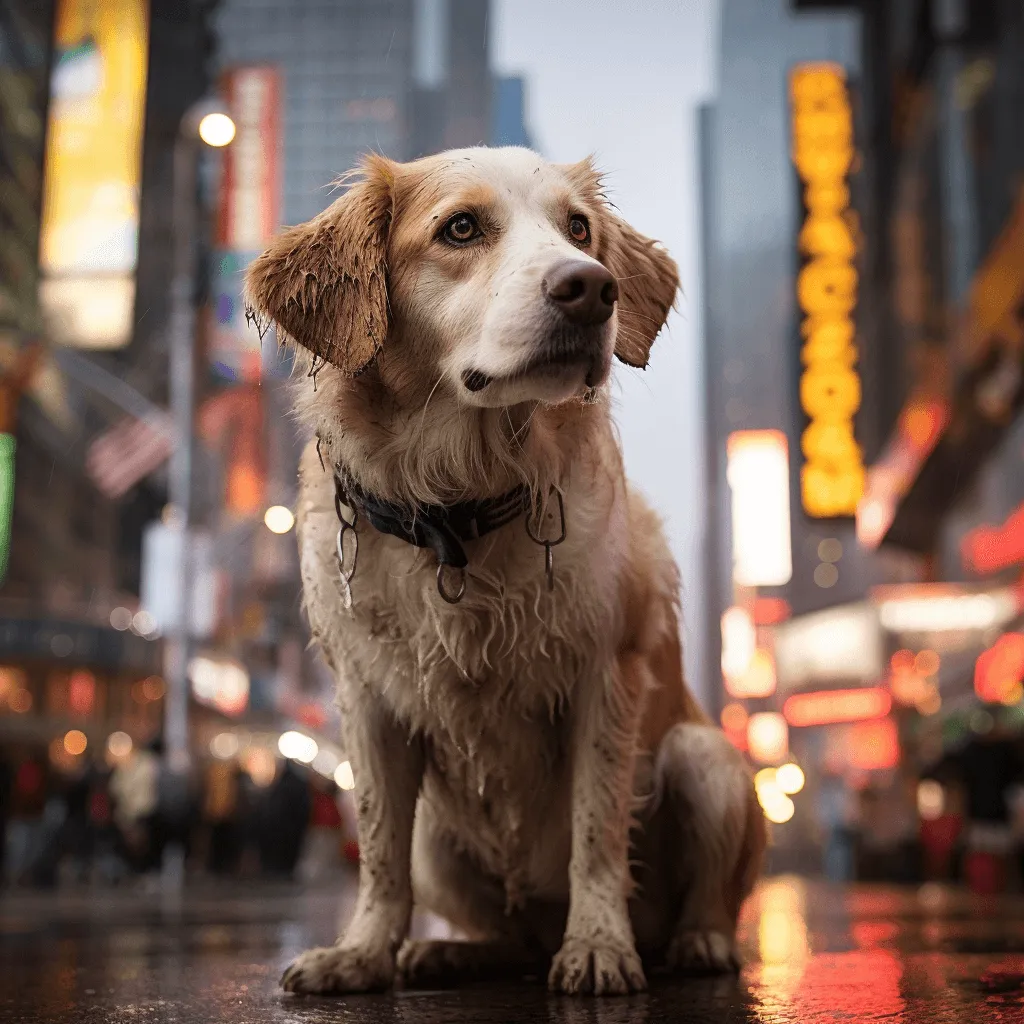Tips For Finding Your Missing Pet
Start with a thorough search of your immediate surroundings, checking all rooms, closets, and outdoor areas. Spread the word in your neighborhood by creating flyers with a clear photo and distributing them in local community centers and pet-related establishments. Use online resources, pet recovery services, and contact local animal shelters. Remain hopeful in your search efforts until your pet is safely back home.
Conduct A Search
Begin your search from the place where your dog was last seen or went missing. Look carefully in the surrounding areas, paying attention to any potential hiding spots or places of interest for your dog. Expand the search area gradually: if you don't find your dog at the initial location, expand your search radius systematically. Cover nearby streets, parks, and neighboring areas. It's important to methodically search each area to ensure thorough coverage. Conduct your search during quiet hours, such as early mornings or late evenings, when there is less noise and activity. This can increase the chances of hearing or spotting your dog without distractions.
Spread The Word
Spreading the word is a crucial step in finding a missing dog. Inform your neighbors, friends, and family members about your lost pet, providing them with a clear description and a recent photo. Use social media platforms to reach a wider audience by sharing the information and asking others to share it as well. Contact local animal shelters, rescue organizations, and veterinary clinics to alert them about your missing pet. Additionally, consider creating and distributing flyers with your pet's details and your contact information in your neighborhood and other public areas. The more people who are aware of your missing dog, the greater the chances of someone spotting and helping to reunite it with you.
Check Your Environment
Start by thoroughly searching your home, including all rooms, closets, and hiding spots. Look for any signs of your pet's presence, such as knocked-over items or open doors. Check your yard and surrounding areas, paying attention to potential hiding places or escape routes. Additionally, inspect nearby bushes, under porches, and in sheds or garages. Keep an eye out for any clues or sightings of your pet, such as paw prints or food/water bowls that have been disturbed. The more diligently you check your environment, the higher the chances of finding any trace of your missing pet.
Bring In Technology
Bringing in technology can greatly aid in the search for a missing pet. Use social media and online platforms to share information about your pet, set up alerts and notifications through pet recovery websites or apps, consider using GPS tracking devices attached to your pet's collar, and install motion-activated cameras to capture any sightings. Integrating technology into your search efforts can provide additional resources and increase the chances of finding your beloved pet. Finding a lost dog becomes easier with Pet911. Leave a listing on the Pet911 website and check the catalogue of found dogs to see if there is a listing from someone who has found your dog already.

Grab Your Dog's Leash
When you find your lost dog, one of the first actions you should take is to grab a leash. Having a leash on hand will help you safely control and restrain the dog as you assess the situation and determine the next steps. It's important to approach the dog calmly and slowly, avoiding sudden movements or loud noises that may startle or scare the dog. Once you have the leash securely in your hand, gently approach the dog and attach the leash to their collar. This will provide you with immediate control over the dog's movements and prevent them from running off or getting into any potential dangers.
Take A Walk In Your Neighborhood
Taking a walk in your neighborhood can be a proactive step in finding a lost dog. As you walk, keep an eye out for any signs of the missing dog. Pay attention to areas where dogs are commonly seen, such as parks, walking trails, or nearby open spaces. Look for any flyers or posters that may have been put up by the dog's owner and check if any local residents have spotted or taken in a stray dog. While walking, it's also helpful to bring along a leash and some treats in case you come across the lost dog and need to safely approach it.
Beware Of Scams
When searching for a lost dog, it's important to be aware of potential scams. Unfortunately, there are individuals who may take advantage of the situation and falsely claim to have your dog. Here are some tips to help you avoid falling victim to such scams:
- Request proof of ownership. If someone claims to have found your dog, ask for specific details or photographs that only the true owner would know.
- Meet in a public place. If you decide to meet someone who claims to have your dog, choose a safe and public location for the meeting. Avoid isolated areas or unfamiliar settings. It's always a good idea to bring a friend or family member with you for added support and security.
- Trust your instincts. If something feels off or too good to be true, trust your instincts. Scammers may try to rush the process, pressure you into making quick decisions, or ask for payment before allowing you to see the dog.
- Report suspicious activities. If you encounter any suspicious or fraudulent behavior, report it to your local authorities or animal control agency. They can investigate the situation and help protect others from potential scams.
- Maintain online privacy. Be cautious when sharing personal information about your lost dog online. Avoid providing sensitive details that scammers could use to deceive you or exploit the situation.
By staying vigilant and following these precautions, you can minimize the risk of falling victim to scams while searching for your lost dog.
Don’t Give Up
Finding a lost dog can be a challenging and time-consuming process, but staying calm is the key. Continue to search your neighborhood, distribute flyers, and spread the word online. Explore different avenues such as contacting local animal shelters, posting on social media groups dedicated to lost and found pets, and reaching out to community organizations. Maintain hope and keep searching, as dogs can sometimes be found days or even weeks after they go missing. Don't underestimate the support of others who may be willing to help in the search. Remember, every effort made increases the chances of being reunited with the lost dog.

Advanced Search Strategies
When traditional search methods have been exhausted and you still haven't found your lost dog, it may be time to employ advanced search strategies. Here are some techniques to consider.
How To Find A Lost Dog With A Microchip
Contact the microchip company and update your contact information in their database. Notify veterinary clinics and shelters about your missing dog and provide them with the microchip number. Register your dog's microchip information on online pet recovery databases. Spread the word on social media platforms and local online communities, including a clear photo and description. Check with animal control and report your lost dog with the microchip details. Stay persistent in your search efforts by distributing flyers, searching the neighborhood, and staying in touch with local animal organizations.
How To Find A Lost Dog At Night
Finding a lost dog at night can be challenging, but here are some tips to help. Use a flashlight to improve visibility in dark areas. Attach reflective materials to your dog for better visibility. Consider using night-vision or thermal imaging devices to aid in your search. Use sound and familiar scents to attract your dog's attention. Search in quiet areas and listen for any signs of your dog nearby. Seek assistance from friends, family, or neighbors to cover a larger area.

How To Find A Lost Dog In The Woods
Finding a lost dog in the woods requires a calm and systematic approach. Start from the last known location and look for signs of movement. Use familiar sounds and scents to attract your dog's attention. Gradually expand your search area, covering a larger radius. Utilize scent-tracking methods with items carrying your scent. Seek assistance from friends, family, or professional dog trackers. Ensure safety during the search and reach out to local shelters and post on social media for additional help.
How To Get A Lost Dog To Come To You
To get a lost dog to come to you, approach slowly and calmly without sudden movements or loud noises. Use enticing treats or food to create a positive association and encourage the dog to come closer. Speak in a gentle and inviting tone, avoiding direct eye contact. Get down to the dog’s level and allow it to approach at its own pace. Use toys or familiar items to engage the dog’s interest and build trust. If needed, seek professional help from animal control, rescue organizations, or behaviorists.

How To Ensure That Your Dog Is Never Lost Again
To ensure your dog is never lost again, take proactive steps such as microchipping and using a secure collar with identification tags. Keep your dog on a leash or in a secure enclosure and supervise them during outdoor activities. Train and reinforce recall commands, maintain updated identification photos, and be cautious during travel or new environments. Stay connected with your local community and get involved with pet organizations to stay informed and help spread the word if needed.
Having insurance coverage for your dog can provide peace of mind and financial protection in the event your dog goes missing. While pet insurance typically doesn't cover the cost of finding a lost pet directly, it can offer benefits that indirectly support your search efforts.
Using a pet tracker can be another valuable tool in finding a lost dog. Pet trackers are wearable devices that utilize GPS or radio frequency technology to track the location of your pet in real time. By attaching a tracker to your dog's collar, you can monitor their whereabouts through a corresponding mobile app or website.
By being a responsible pet owner and taking these measures, you can greatly minimize the risk of your dog getting lost.

